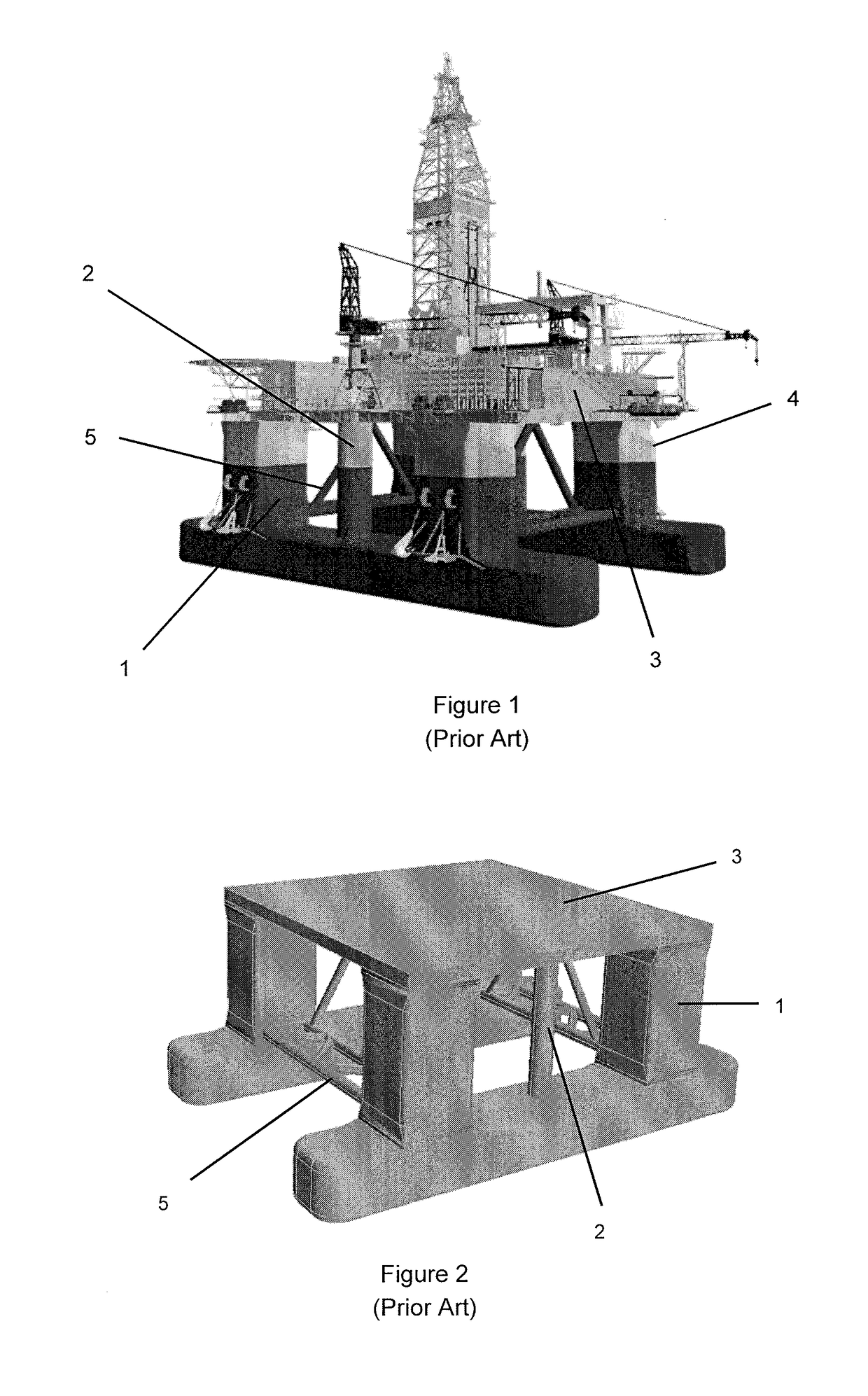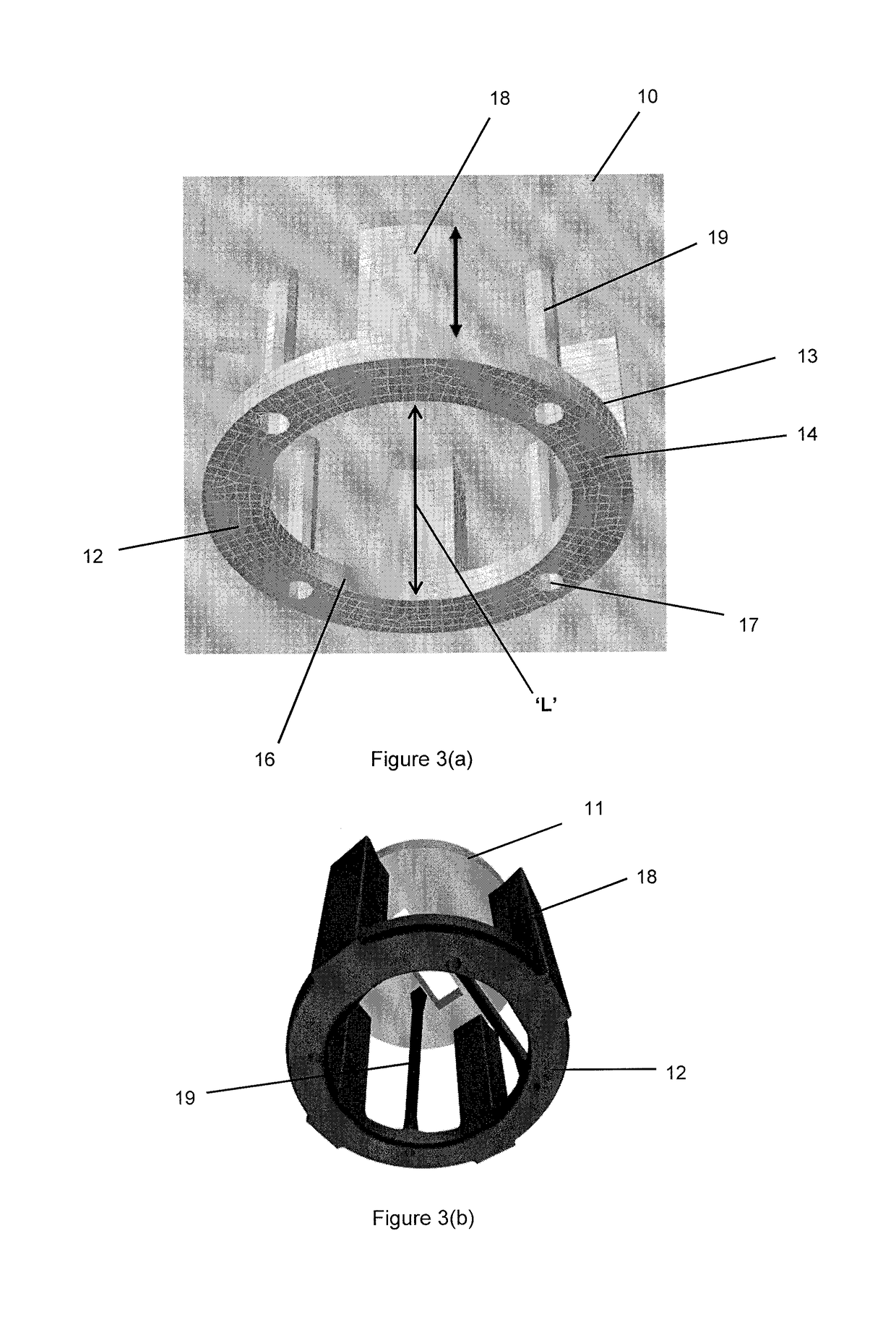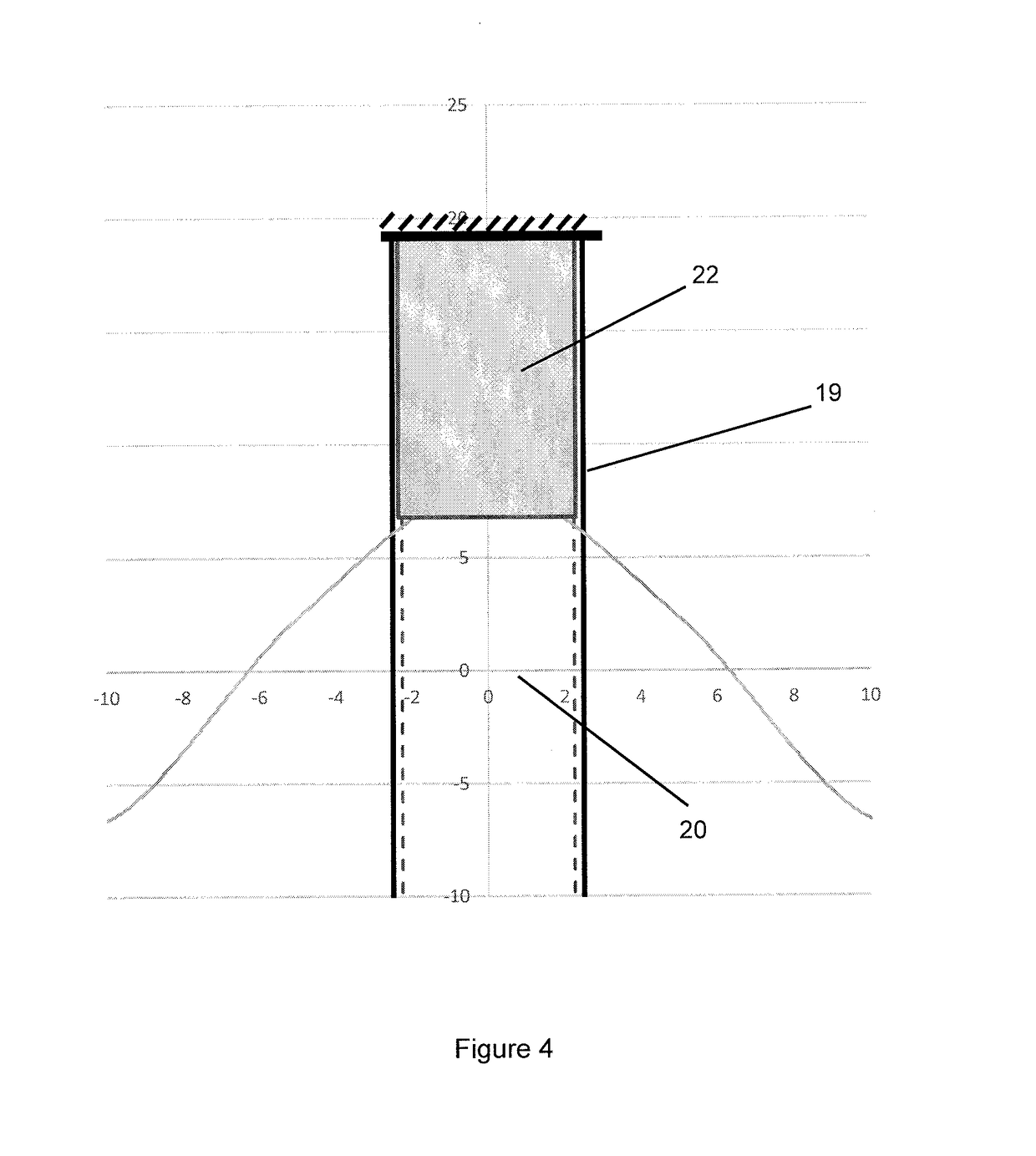Low motion semi-submersible
a semi-submerged, low-motion technology, applied in vessel construction, special-purpose vessels, transportation and packaging, etc., can solve the problems of heave, pitch and wave motion, and typical excessive conditions, and achieve the effect of reducing pitch
- Summary
- Abstract
- Description
- Claims
- Application Information
AI Technical Summary
Benefits of technology
Problems solved by technology
Method used
Image
Examples
example 1
[0071]FIG. 20 illustrates the harsh environment in North Sea, West of Shetland. The chart shows that 96.6% of wave energy lies within the wave period of 14 seconds, and 99.5% of wave energy lies within the wave period of 16 seconds. The heave second hump needs to be minimized in the wave period between 5 to 16 seconds to increase the operability of the semi-submersible. Further, the heave natural period needs to be more than 19 seconds to avoid resonance.
[0072]The low motion semi-submersible in accordance with some embodiments of the present invention is able to achieve the desirable results. In particular, the semi-submersible in accordance with many embodiments of the present invention is able to achieve a heave second hump of less than 0.15 m / m and a heave natural period of about 19.3 to 20.5 seconds. This is attributed to the semi-submersible having a reduced column spacing (L) which results in motion cancellation, thus reduces the second hump value to less than 0.15 m / m. The in...
example 2
[0073]FIG. 21 illustrates the heave Response Amplitude Operator (RAO) of various conventional semi-submersibles (including the semi-submersible shown in FIG. 1) as the wave period increases. It is shown that the conventional semi-submersible of FIG. 1 has a relatively lower heave RAO (i.e. better motion control) as compared to the other conventional semi-submersible designs and thus higher uptime. In particular, the conventional semi-submersible of FIG. 1 has a heave second hump of about 0.32 m / m.
example 3
[0074]FIG. 22 is a graph that compares the operational draft, heave natural period and heave second hump of the low motion semi-submersible (‘LMS’) in accordance with an embodiment of the present invention and some other conventional semi-submersibles. As shown in the graph, the low motion semi-submersible (LMS) has better heave, pitch and roll motion as compared to the conventional semi-submersibles which results in the low motion semi-submersible having a higher operational uptime as compared to the other conventional designs.
[0075]The readings of the operational draft, heave natural period and heave second hump of the semi-submersibles are shown in Table 2 below:
TABLE 2OperationalHeave NaturalHeave SecondDraftPeriodHump(m)(sec)(m / m)LMS4020.50.135000HE24.019.10.32Rig A24.819.50.43Rig B25.523.90.57Rig C21.326.00.59Rig D23.819.70.35Rig E23.522.80.45Rig F2.022.20.44Rig G17.819.10.52Rig H23.221.00.42
PUM
 Login to View More
Login to View More Abstract
Description
Claims
Application Information
 Login to View More
Login to View More - R&D
- Intellectual Property
- Life Sciences
- Materials
- Tech Scout
- Unparalleled Data Quality
- Higher Quality Content
- 60% Fewer Hallucinations
Browse by: Latest US Patents, China's latest patents, Technical Efficacy Thesaurus, Application Domain, Technology Topic, Popular Technical Reports.
© 2025 PatSnap. All rights reserved.Legal|Privacy policy|Modern Slavery Act Transparency Statement|Sitemap|About US| Contact US: help@patsnap.com



